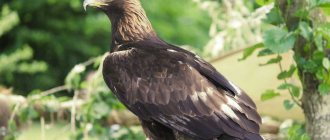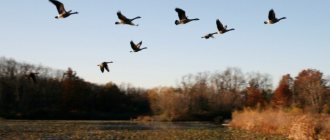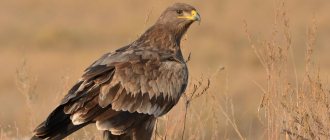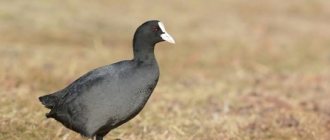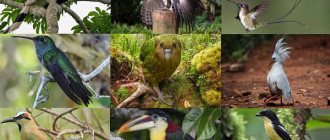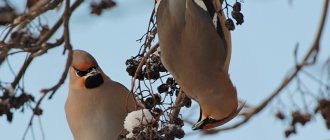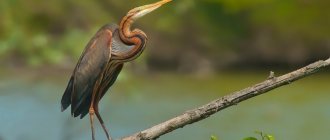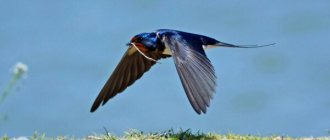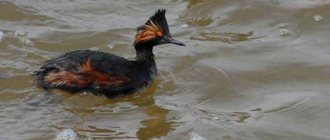- September 25, 2018
- Miscellaneous
- Barinova Vera
When preparing for a hunt, the hunter carefully selects methods, since not every bird is suitable for the same conditions: some are shy, some live on the ground, and so on. The hunter must foresee all this in advance. However, the birds that were planned to be hunted are not always found. A particularly striking feature of many bird species is their long beak. If professionals do not need photos of birds with a long beak, then those who are just learning will be interested in examining in detail the appearance of the new game. Who is allowed to hunt in Russia, and what birds live there?
Game birds of Russia: photos with names
Woodcocks can be called very interesting representatives of birds. These inhabitants of mixed forests are also found outside them, since thickets of bushes provide good shelter for them. In addition, it is allowed to hunt:
- fourty;
- rock pigeon;
- shepherdess;
- snipe;
- coot;
- gray heron;
- Shoveler;
- teal;
- geese (white-fronted, gray);
- gray duck;
- partridge;
- mallard;
- quails
Although the list can be replenished with even more birds, they still do not all have a long beak. When a hunter intends to shoot one, he should carefully examine whether the area has permission to shoot these birds at a particular time of year. For example, in some areas you can shoot black grouse, but in other periods you cannot touch them, and in other regions they are protected by law, and hunting them is completely prohibited. Let's take a closer look at the photos of birds with long beaks, where they live and what size they are.
cock of the rock
The beak of this bird is covered with feathers.
Such beaks are an extension of the bird’s comb; they are needed to attract females.
Woodcock
It’s worth noting right away that there are certain features of woodcock hunting. So, you should not shoot when the bird takes off, because there is a high probability that it may be a female. Why can't you shoot females? To keep the population from declining, the females are left to care for the eggs. If you kill a bird, the brood will disappear. In addition, she will not be able to lay any more eggs, which means that the population will inevitably decline next season. Interestingly, there is a ban on shooting at a woodcock if it flies silently, without the so-called “grunting”. This is logical: the characteristic sound gives this bird away, and they can be confused with other representatives of birds.
Woodcocks are birds with a long beak; photos with names clearly show how unusual they are. It is characteristic that when danger approaches, the bird presses very tightly to the ground and does not fly up: camouflage is created by yellow-brown and longitudinal dark stripes, as well as black-brown wings. The body has gray and red spots, and therefore it is almost impossible to distinguish it on the ground. It feeds on worms and other invertebrates. The woodcock itself can fit in the palm of your hand, as it has a small body size.
Toucan
The bright, massive beak of the toucan is covered at the edges with sharp serrations necessary for holding food.
The beak, despite its external massiveness, is actually light, as it has a porous structure.
The beak of a toucan is completely riddled with blood vessels, and thanks to this the bird is able to regulate its body temperature.
gray heron
Another species of bird with a long beak, the photo of which you see above, is the gray heron. No, she does not have such a long beak as a woodcock or, for example, a snipe, but it can also be called a distinctive feature of this representative of birds. The heron has gray plumage, long legs, and a powerful beak. When she spots danger, she takes off rather than hiding. It is characteristic that the take-off is smooth, but without a run-up, from a standstill. Body length usually ranges from 90 to 98 cm, and the average weight is 1.1-2.3 kg.
The home of the heron is flooded bushes, trees near swamps, stakes and lakes. There is food in the pond, such as fish - herons eat almost every species that they can swallow. Rodents and lizards serve as food in the fields. These birds live in colonies, the number of which ranges from several families to thousands of individuals. Nests are placed nearby, and they can be made both on strong tree branches and on thin twigs of bushes. The nests are unusually light and eggs can be seen through the sides.
Shoebill
One of the largest birds is also called the Royal Heron.
With its huge massive beak, the shoebill catches and swallows catfish and frogs, lungfish - protopterans.
It also does not refuse small mammals and birds.
The bird lives in Africa on the banks of the Nile. Prefers swampy areas.
The second function of this beak is that in hot weather the shoebill places its eggs or small chicks in its beak and dips them in water to protect them from overheating.
Another interesting feature of the shoebill is that its eyes are not located on the sides of the skull like all birds, but are directed forward, so the bird sees everything in volume.
Snipe
Another species known as a bird with a thin long beak, a photo of which confirms its status, is the snipe. It is a close relative of the woodcock, but is still very recognizable. During the current, it produces a peculiar bleating, for which it received the popular nickname “forest lamb”. The size is small: body length is about 25 cm, and weight is 90-170 grams. As a habitat, the snipe chooses places with moist soil, because it is there that it is easier to get food: river banks, moss-covered swamps, forest glades, or generally areas near large populated areas.
They have gray-brown plumage with rufous areas. The legs are short, without webs. The beak reaches 2/3 of the body length, can bend slightly, and becomes pointed towards the end. Snipes hunt in the evening, when dusk is falling. They, like woodcocks, will rather hide than fly away, and the darkness will greatly help them with this. Due to the fact that worms and bugs need to be pulled out of the ground at great depths, the tip can open while the rest of the beak is tightly closed.
Spruce crossbill
It is also called the common crossbill, and it belongs to the large family of finches. Despite the species name "common", it has an unusual beak. The crossbill's upper beak intersects with its lower beak. The crossbill feeds on the seeds of coniferous trees, and this crossed beak helps them get to the tasty seeds. With its unusual beak, it easily splits even the strongest cones. A very beautiful, noisy and active bird.
3
Shoveler
Doubts may arise here: why were shovelers included in the list of birds with a long beak? The photo clearly demonstrates that they have a much smaller size compared to snipe and woodcock. The thing is that the comparison almost always comes with other ducks. It also belongs to this family, but it is the beak that distinguishes it from its relatives. It is flat, wide and long, giving rise to the name of this bird. The beak reaches a length of 7 cm, which is an impressive figure for a bird that does not exceed 1 kg in weight.
The paws are red with membranes, the color is brown with black dots, and the beak is flat with a brown tint. These are migratory birds, and therefore they choose the shores of seas and estuaries during flights for rest, and for permanent residence they prefer shallow water bodies with open areas nearby. In addition to crustaceans, larvae and worms, shovelers feed on plants, so it is important that there are thickets of lush grass nearby.
Dead end
Such a beautiful beak plays an important role in mating games - it serves to attract a female.
Before the courtship period, their beaks are yellow, and during mating games they turn red.
Pelican
How can one avoid a bird that even children recognize by its long beak, which can expand if food gets into it? In the photo, birds of this genus can be recognized due to their red beak, small head (5 times smaller than the body), long neck and massive body. The bird reaches 1.8 meters in length and weighs 14 kg. Due to living conditions and extremely thoughtless shooting in the past, there are now only eight species of pelicans. Their population on the planet is so small that birds are practically not found.
Pelicans are listed in the Red Book and hunting them is prohibited. Even a beginner will not be able to make mistakes, because a pelican can be recognized at first sight.
Roseate Spoonbill
It finds its food in shallow water.
Uses its beak to catch fish, aquatic insects and crustaceans.
Bird with a long thin beak: names
The photos offered in the article will help with identifying the type of bird. Note that there are not so many species with such a beak: snipe, woodcock, great snipe, curlew, and garden cock. However, there are also storks, hornbills, and hummingbirds. But hunting them is prohibited in many areas, and therefore it is worth carefully considering the laws before deciding to go after such game.
Thus, birds with long beaks are easy to remember, they differ from each other. Because they have characteristic features in appearance, lifestyle and even reaction to danger. Studying such features can provide invaluable experience to a young hunter - the hunt will become more interesting, varied and successful.
Malay kalao
Photo source: ernard DUPONT / flicr
This bird not only has an unusual name, but also a beak. On top of the massive beak is a kind of helmet, reminiscent of a rhinoceros horn. With its powerful beak, the kalao extracts fruits from tropical trees, but the helmet acts as a resonator. The bird makes loud sounds to them.
In Malaysia, the bird is considered a symbol of purity and purity, and in the past it was worshiped as a deity. And today their image, and even the birds themselves, are used in religious rituals.
2
Reproduction and lifespan
Future parents begin building the nest in the second half of March. Both birds take part in this process. The starting material is branches, reeds, leaves and grass. The size of the building is impressive - up to half a meter in diameter, and almost ideally cup-shaped.
The depth of this structure is about 10 cm; it is usually located somewhere on a bush or tree, which additionally protects against attacks by natural enemies. There are 3-4 eggs in a clutch of a delicate bluish-green hue. They are mainly hatched by the mother. At this time, the parent is engaged in guarding, obtaining food, only occasionally replacing his friend on the clutch.
The chicks appear after 18-20 days. They are initially covered with black down and have a sparse appetite. Parents have to feed them 8-10 times a day. Over time, the appetite fades, and the fluff wears off, turning into feathers.
They make their first flight at the age of 3 weeks. After another seven days, they can already fly on their own. Typically, the life expectancy of ibises is about 15-20 years. But this period is greatly influenced by natural conditions and the presence of natural enemies.
Kinds
The genus of loonies includes three species - ordinary, spectacled and slender-billed.
- The spectacled loaf is a resident of the North American continent. It mainly occupies the western part of the United States, southeastern Brazil and Bolivia, and also occurs in the central part of Argentina and Chile. It has the same brownish-purple plumage with a metallic sheen. Differs from the usual area around the beak, which is painted white.
- The slender-billed loon or Ridgway's loon is a native of South America. There are no special differences in plumage either. It is distinguished from a typical representative by the reddish tint of its beak. She probably got the name for its more noticeable appearance.
It is impossible to ignore our heroine’s close relatives – ibises. In general, there are about 30 species. The white and red ibises are considered to be the closest to the loaf.
- The red ibis has a very beautiful plumage of bright scarlet color. It is slightly larger in size than a regular loaf. Lives in South America. Before the mating season, birds grow throat pouches.
- The white ibis is also an inhabitant of the American continent. The plumage, as you know, is snow-white; on the front of the head there are red areas without feathers. Only at the tips of the wings are there black edges, noticeable only in flight. Long legs and a slightly curved beak are painted in a bright orange color almost all year round.
- And finally, the most famous relative of the loaf - the sacred ibis. It got its name in Ancient Egypt. He was considered the personification of the god of wisdom Thoth, and therefore he was embalmed for preservation more often than other birds.
The main plumage is white. The head, neck, wing tips, beak and legs are black. The most beautiful bird looks in flight - a white glider with a black border. Body size is about 75 cm. Today, such an ibis can be found in North Africa, Australia and Iraq.
In Russia, arrivals of this bird were previously observed in Kalmykia and the Astrakhan region. For some reason, we usually call it black loaf , although this contradicts its appearance.
King's Warbler
The length of the body is 9-9.5 cm, weight 4-7 g. Another warbler took a place in our ranking of the smallest birds in our country. This time it is a King's Warbler , which is very similar to the Lightning Warbler, but has a noticeable yellow stripe along the eyes and one along the crown.
The kinglet has the brightest feather in autumn; it is grayish-green-yellow, the head is much darker than the wings. The spring outfit of both males and females is much lighter, more gray.
Just like the lightning, the king's warbler is fast and agile, capable of hovering in place. Breeds in eastern Russia, Sakhalin, Eastern Siberia and Altai. Prefers taiga tall coniferous forests.
Red cardinal
A medium-sized bird, up to 20-23 cm long. The male is slightly larger than the female, painted in a bright crimson color, with a black mask on his face. The female is light brown in color, with bright red splashes. The beak is strong, cone-shaped, and can easily peel off the bark to reach insects. The legs are painted pink, the pupils are dark brown.
The cardinal's habitat is the eastern United States. However, three centuries ago the bird was introduced to Hawaii, Bermuda and California. It quickly caught on and is widespread. The cardinal has a wonderful baritone, his trills resemble those of a nightingale, sometimes called the “Virginia nightingale.”
Cardinal bird
Lifestyle and habitat
The karavaik can be called rather a heat-loving bird. Its nesting sites are located in separate areas on the African continent, in the west and south of Eurasia, in Australia and in the southeast of the USA. In Russia, it is found in river basins that carry their waters to the Black, Caspian and Azov Seas. Migratory individuals winter in Africa and Indochina.
And the few wintering birds remain near their own family nests. They live in colonies, often adjacent to other similar birds - herons, spoonbills and cormorants. They usually live in pairs. All nests are located in hard-to-reach places, on tree branches or in impenetrable bushes.
For example, African representatives choose for this purpose a very prickly species of mimosa, which the Arabs call “harazi” - “protecting themselves.” From the thickets and branches the nest appears like a deep, loose structure, reminiscent of an openwork bowl.
It happens that little louses take over the nests of others, for example, night herons or other herons, but then they rebuild them anyway. The most comfortable conditions for them are the banks of reservoirs or swampy lowlands.
They lead a very active lifestyle. The bird can rarely be seen standing motionless; usually it paces through the swamp, diligently finding food for itself. Only occasionally does he sit down to rest on a tree.
It flies rarely, most often due to imminent danger or for the winter. In flight, the bird extends its neck, like a crane, and makes intense flapping of its wings, which alternate with smooth gliding through the air.
Long-billed Curlew
The curlew spends most of its life on the ocean coast of North America, but builds nests and hatches chicks in the grassland meadows inland. It easily adapted to life in two habitats thanks to the special shape of its beak. In winter, on the coast, the beak helps to hunt crustaceans, pulling them out of holes, and in summer, dig worms out of the ground. The female from the male can be distinguished by the length and shape of the beak. In females it is longer and more curved.
7
Black cutwater
The bird lives in North America and belongs to the waders family. So, of all the North American birds and representatives of waders, the water cutter has the most original beak. It is very long, but thin. In addition, the mandible is longer than the upper part.
The beak is necessary for a special feeding technique. The bird flies over the surface of the water, launching its lower part into it. As soon as a fish is caught, the upper part slams shut.
4
Yellow-headed Kinglet
The length rarely exceeds 9 cm, weight up to 7 g. The yellow-headed kinglet stands out from the bird fraternity thanks to its yellow crest with a black edging, reminiscent of a rich headdress. The gray plumage of the head turns into an olive-green back, the underparts are gray-olive.
In northern latitudes, the wren acts as a substitute for hummingbirds, this bird is so fast and light. The distribution area is unusually wide. You can meet the yellow-headed kinglet on the shores of the Black Sea, in Karelia, in the forests of the Caucasus and Altai. Also found on Sakhalin and even the Kuril Islands.
It prefers to settle in coniferous forests, less often in mixed forests, where it builds its round nests with a small flight hole. These nests are suspended quite high, at a height of 6-8 m, less often up to 15 m, and are well camouflaged in the branches.
Units
Division into orders is one of the main scientific classifications of birds. This is one of the levels of the hierarchical system, which is above the family and below the class. The most numerous units within our country:
- Anseriformes (swans, geese, geese, ducks, etc.);
- Charadriiformes (magpies, lapwings, plovers, etc.);
- Passeriformes (larks, swallows, wagtails, etc.);
- Falconiformes (eagles, vultures, harriers, kites, etc.).
The most numerous orders of birds in Russia
Spotted Scoter (Surf Scoter)
Ducks are known to quack, but in fact, sea ducks make a huge variety of sounds. Additionally, the typical yellow bill seen on mallards or farm ducks is not universal among all ducks. Ducks can be divided into several categories: dabbling ducks and sea ducks. Ocean waterfowl have some of the strangest beaks of any bird. Featuring almost entirely black plumage and adapted to feeding on shellfish, the Pied-billed Scoter boasts a huge clam-catching bill that allows it to easily pick up large prey from the ocean floor. The black, orange and beige patterns on the male's beak make it particularly striking, while the large nasal openings appear as if there is a transparent tunnel running through its beak. Pied-billed scoters are found along North American coastlines and travel north during nesting season. When they gather in large schools, you can hear a strange cry on the water, more like a whistle.
Great Indian kalao
Another kalao on our list, found in the tropical forests of India and Thailand. The largest representative of hornbills with a large and unusual helmet over its beak. Scientists suggest that it serves for sexual selection.
The beak itself is massive, but the hollow growth serves to produce loud sounds. Flying from branch to branch, kalaos communicate with each other, and therefore one cannot help but hear them when passing by tropical trees.
9
Interesting Facts
- In the old days, people believed that loafs were spirit birds. It’s as if they fly only at night, fast as shot from a gun. They can only be seen by shooting, aiming at random at the entire flock. In addition, there was a legend that they lay eggs right in the clouds.
- It is ibises, including ibises, that are considered birds that predict river floods. Since ancient times, they have appeared on the banks of deep rivers closer to dangerous high waters. Residents of coastal areas knew this feature well, and often left to higher ground ahead of time along with livestock and things.
- Herodotus believed that ibis birds track down the nests of snakes, kill them, and therefore are very popular in Egypt. Moreover, there was a legend that they are not afraid even of dragons and other reptiles. However, despite the apparent fictionality of the last assumption, we should not forget that the Egyptians usually deified animals that benefited them. So the background to this legend is very plausible - ibises really hunt small snakes.

